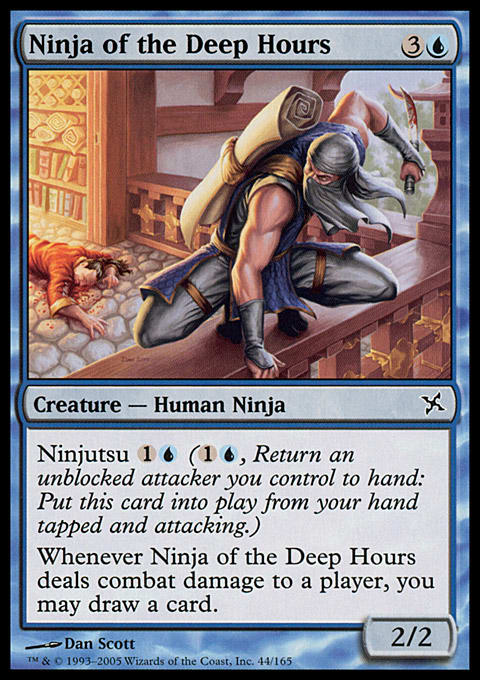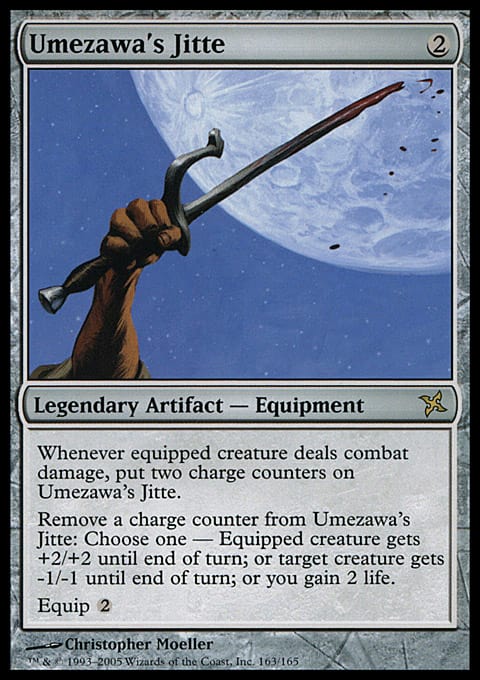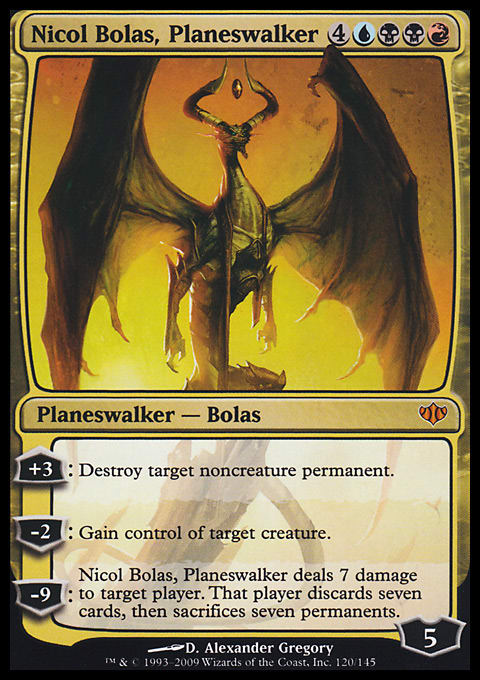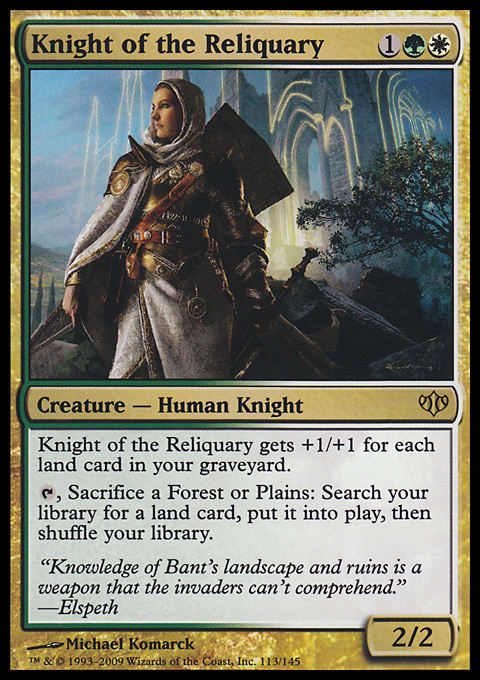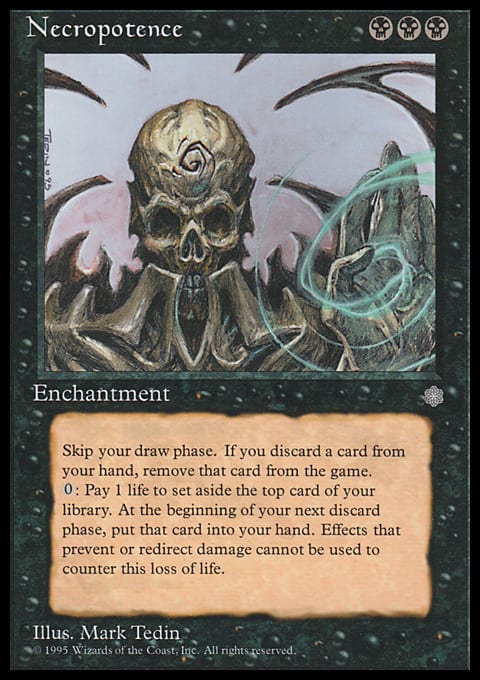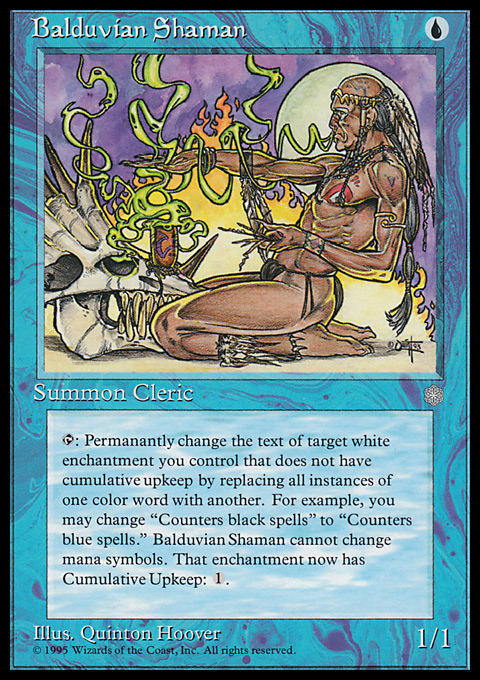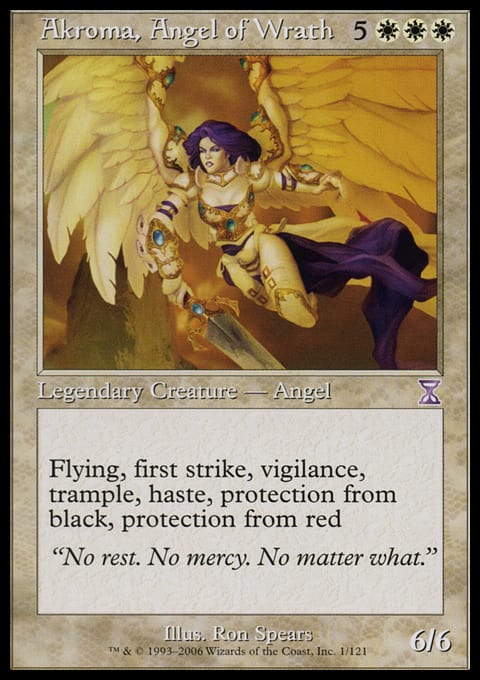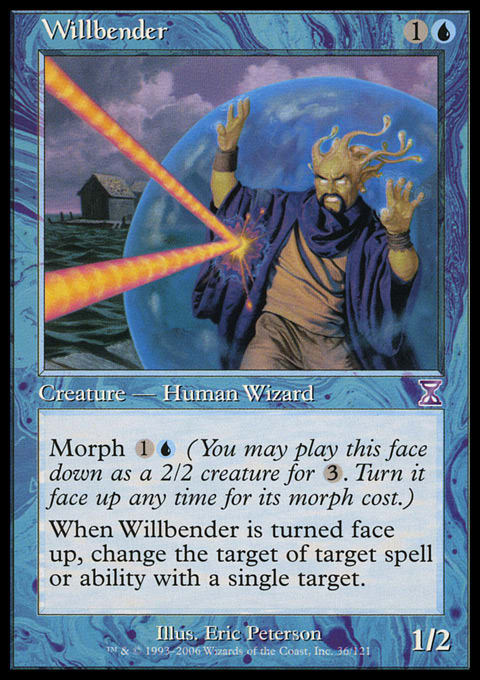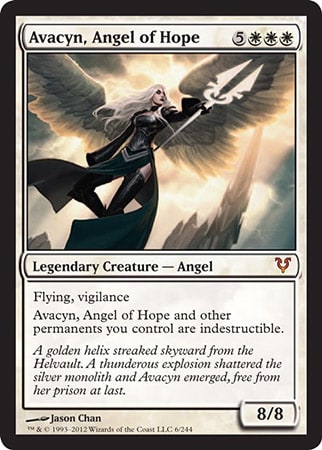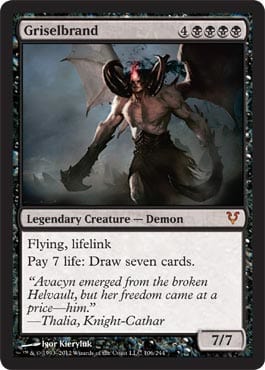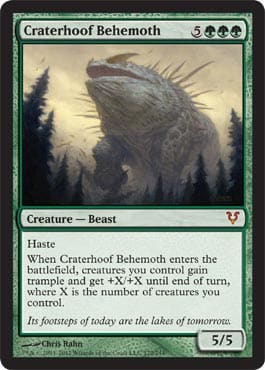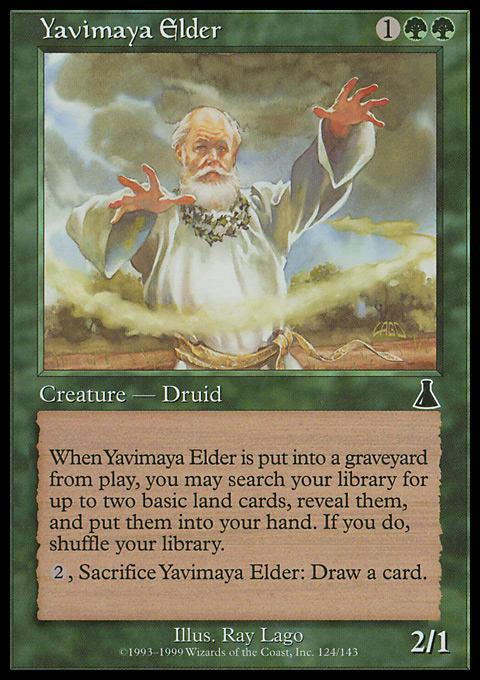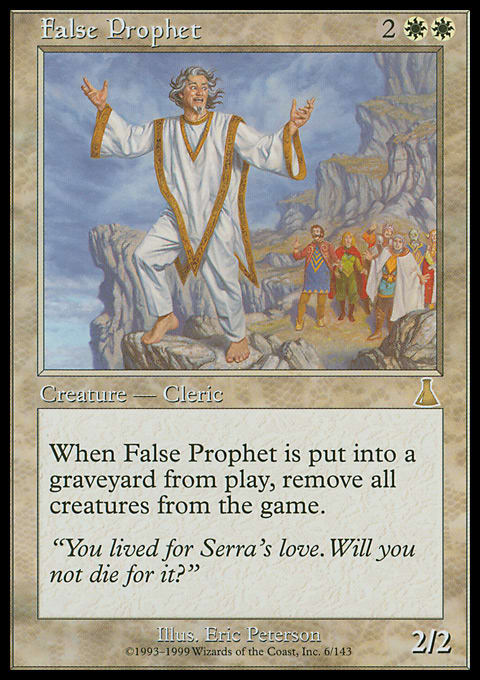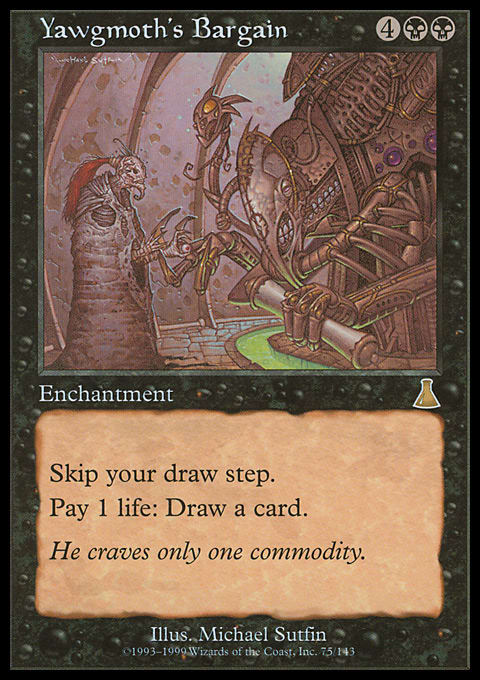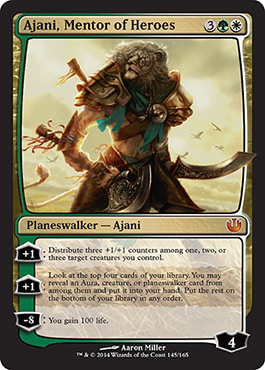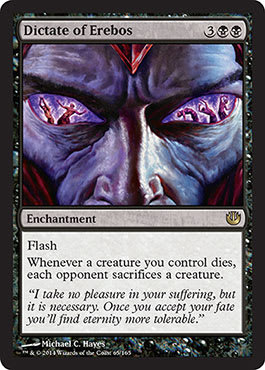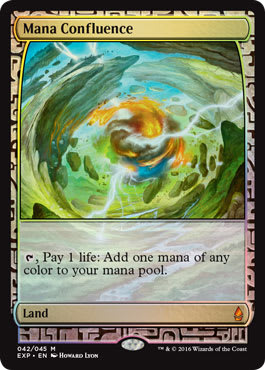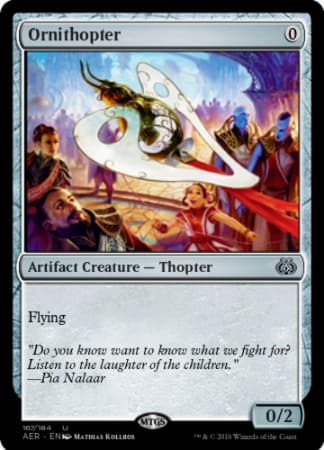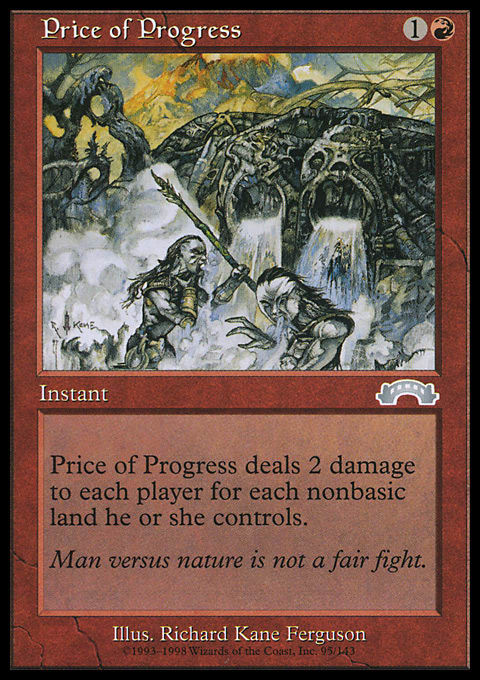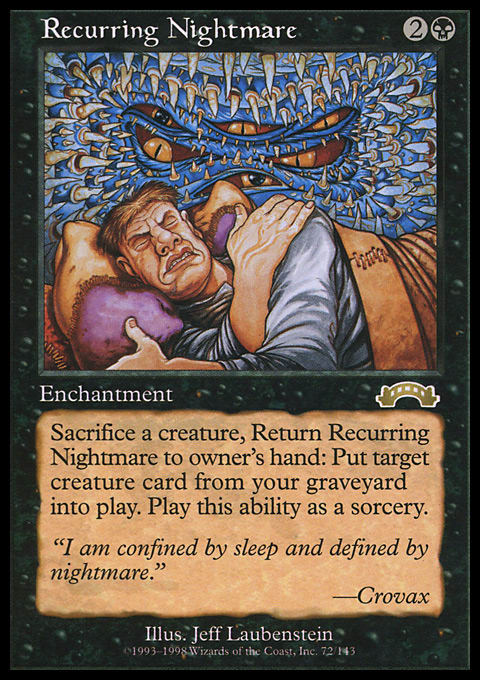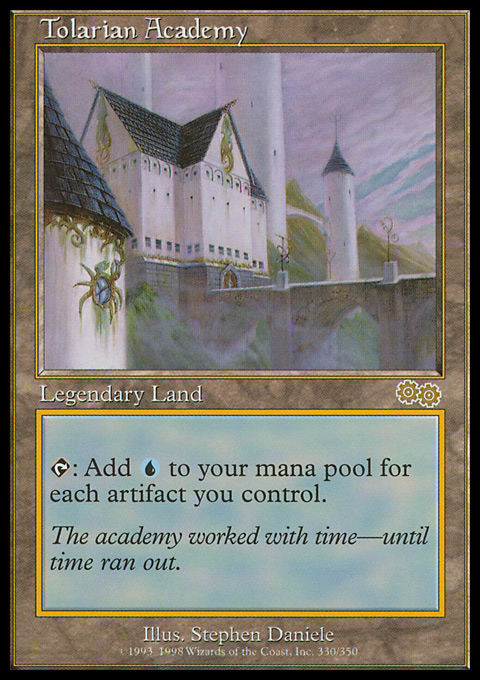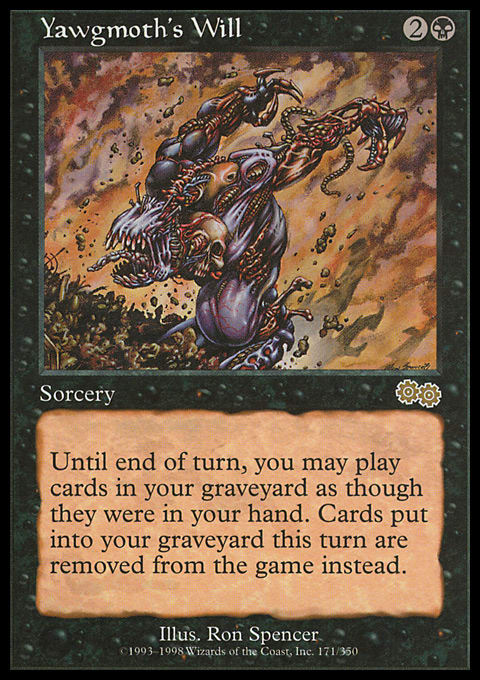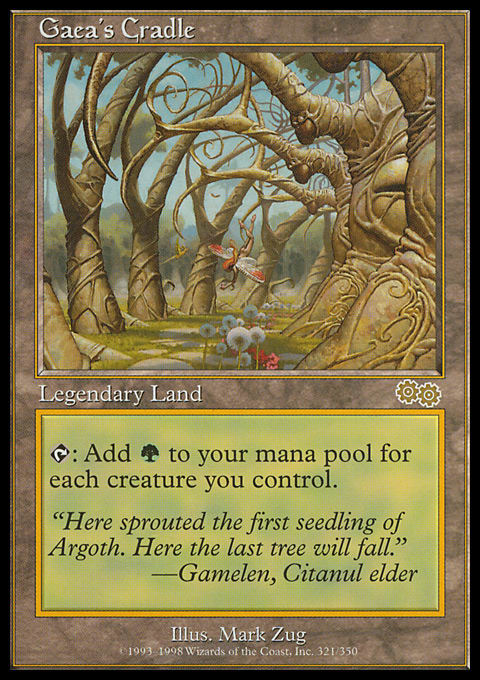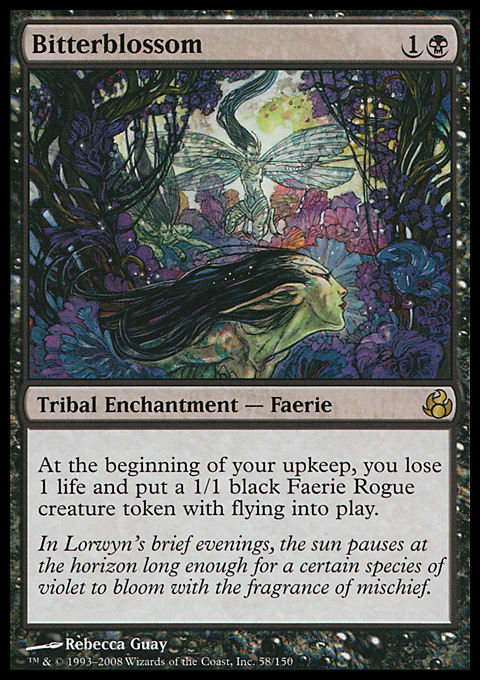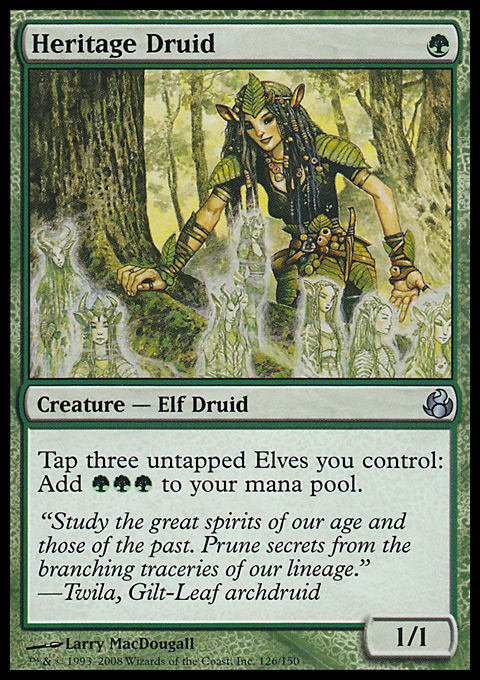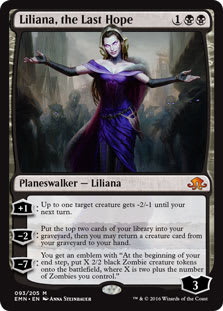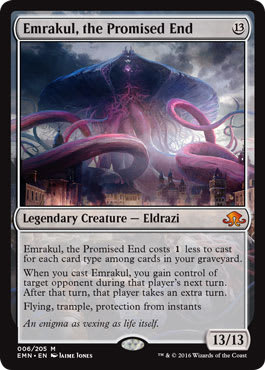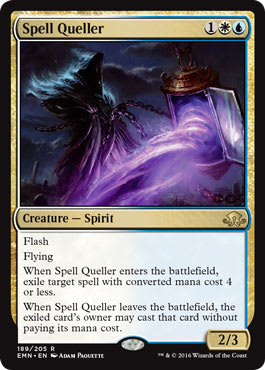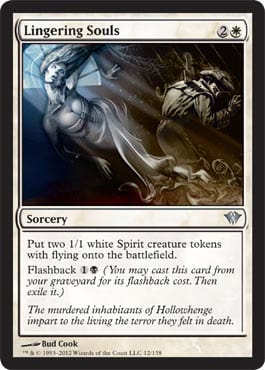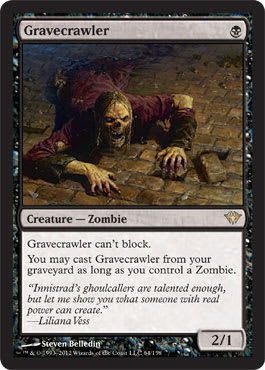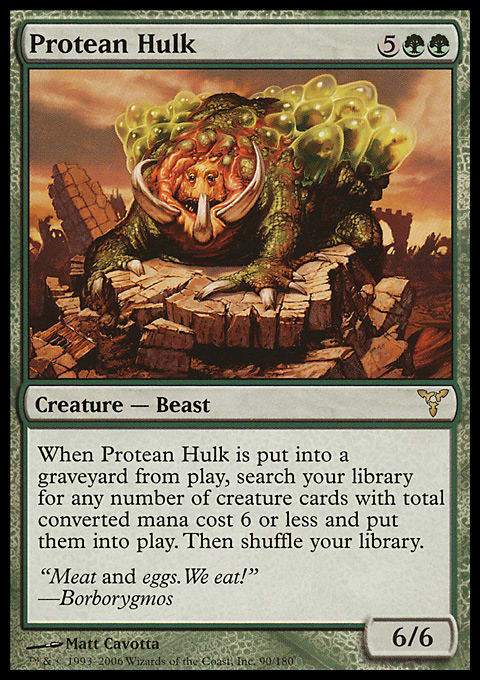Hello folks and welcome back to the ongoing look at the rankings for all 78 sets we’ve seen. Included on this list is everything that was new (or mostly new) cards, so Fifth Edition or Commander 2016 are not included.
This ranking started last Monday, and will now continue with the next 20 sets.
Each set is rated on five different categories, with a score given of 1-10 for each category. Those scores are tabulated, and the results are below. The first week we looked at sets that were the worst 18, and would qualify as bad according to our metric. The next two weeks we are looking at sets that are in the average category, starting today with the lower end of average, and finishing with average later, before we move into the authentically good sets to conclude our experiment.
The categories:
- Innovation — Innovation considers a few aspects of the set. Is it trying to do something new? Explore unexplored space? How different is it? This considers both the central conceit of the set as well as the various mechanics and more.
- Flavor — How flavorful is the set? Does it have a good story line? Are there great names and art that resonate? And most importantly, do the mechanics matchup with the central concept of the set?
- Power — Here you go Spikes! How powerful are the cards in the set? How impactful are they at a kitchen table or tournament? Do they have a useful pedigree?
- Design — How well designed is the set? Are there interesting layers? How good is playing it in limited? Are there good mechanics that work well or are they overly insular?
- Tilt — This is my catchall category for a variety of factors. How fun was the set? Did the set do anything extra? Did it set any trends? Did all of the pieces come together in flavor, design, innovation and power?
Because we are in the average category, and we have a good statistical deviation, forty of our sets scored between 29 and 33 points. That’s to be expected from a rating system like this that has enough of a sample size.
Initially, my tie-breaker was the Tilt score. But, for the many sets at 29 points and above, I decided to do it differently. I did a single elimination tournament, with the worst set getting the 19th worst set of all time, and then 20th and such with each set making the list. My normal tie-breaker of Tilt was not helpful as they all had 5 or 6 Tilt. Ready?
Here we go!
60. Betrayers of Kamigawa, 29 Points
Another Kamigawa Set falls. The problem with Betrayers is that it winds up being a little too by the note. It introduction of Ninjas is obvious, and their mechanic is interesting for something else, but doesn’t necessarily tie into Ninjas. I think the ninjutsu mechanic is about showing that something you thought was a minor creature was actually, SUPPRISE, a Ninja, but in play, it really feels very different and un-Ninja-y. The other cards are a bit on-the-nose, with a few overly powerful cards (cough, Umezawa's Jitte, cough) stealing the limelight, but revealing a weaker limited slate of support, and weaker players. Champions was so good, and Betrayers is hit and miss. And that’s why it falls on the back end of the average sets, and I score it as the worst rated of the various 29-point scoring sets.
59. Conflux, 29 Points
Unlike Betrayers of Kamigawa, Conflux actually tried to do something different, so props to you. So the tie goes to it. Hey look, we’ve had a ton of different multicolored sets and concepts. Invasion Block. Ravnica Block. Shadowmoor and Eventide. Each had a different take. And then Shards of Alara arrived with its three friendly colors making a fun dichotomy. So wherefore to next? We get a set with a five-color theme. And that’s a solid place to dig into. The problems that evoked were pretty interesting, and it was hard to get the five-color deck in limited for dropping Fusion Elementals and Maelstrom Archangel. And cards for casual tables were more limited too, as the cards naturally were oriented for the particular format. Plus, you had weaker versions of mechanics that casual players liked, such as Domain. No one wants Aven Trailblazer in their Domain deck, go away. Other than a few mana smoothing cards like Armillary Sphere and Exotic Orchard, a handful of Path to Exile, Knight of the Reliquary, Nicol Bolas, Planeswalker, Martial Coup, Noble Hierarch, and Master Transmuter, there’s just not a lot under the hood.
58. Ice Age, 29 Points
Ah yes. Bizarre, even for its time, with that snow crap and complex mechanics like Winter's Chill, Ice Cauldron, and Balduvian Shaman. Setticus Bizarricus. But underneath that is a set with some chops too. It was one of the first sets that came along and gave you additional options for deck-building purposes. Consider cards like Dark Banishing, Incinerate, Dance of the Dead, Soul Burn, Lava Burst that duplicated, mostly, effects that already existed. Or how about Ashen Ghoul, which made Nether Shadow playable again, since you had two creatures with a similar style of play. How about Knight of Stromgald compared to Order of the Ebon Hand? Necropotence compared to Greed? It also gave us cantrips! Free spells, you just had to wait a turn to get the free option. It also had, arguably, the first enters-the-battlefield creature ever with Pyknite, although that’s more of an ur-example.
57. Legions, 29 Points
I feel like Legions was the first set with the gimmick of “All In” with a certain mechanical aspect, although Torment might really hold that crown. Do you like creatures? Then how about a set with nothing but creatures? Block and swing and win that game! The one good thing about Legions is that it came in the middle of a tribal block that cared about creature type, so there was a need for creatures. But the problem with this set is also probably obvious. Imagine a normal draft. In a given color, you’ll have great spells and great creatures, along with a lot weaker spells and creatures. So, let’s say you have 10 spells and 10 creatures in your common Blue pool. And 3 of each are really good! And 3 of each are really bad. But if you have 20 creatures instead, then if you have 6 good creatures at the same level of value as those 3 great spells, then they will dominate board play. So you wind up with a lot more, “Meh” creatures than normal mugging up the draft. It also created an odd draft format, because you were guaranteed to get 15 creatures in Legions, and that’s enough to play in a deck. So you were often forced to get good sorceries, instants, artifacts, lands and enchantments in the first pack before you cracked Legions. That created an odd dissonance in playing a set focused on creature type, because I shouldn’t be forced to skip a good Beast because I need to ensure I get Shock or something now. Good cards from Legions include Akroma, Angel of Wrath, Windborn Muse, Seedborn Muse, Scion of Darkness, Timberwatch Elf, utilities like Nantuko Vigilante, Willbender, and Bane of the Living, and that’s it.
56. Avacyn Restored, 29 Points
Avacyn Restored doesn’t get a lot of respect, and I get that. In Limited, it was pretty weak. Sure. A poor cap to the environment it was in. But the cards aren’t bad at all for other purposes, and there are a lot of nice casual hits in here, led by Avacyn, Angel of Hope, which I have called the best creature for multiplayer ever printed (I still think that). Restoration Angel! Miracles made an impact at kitchen and tournament tables alike. We have casual bombs like Cathars' Crusade, Cavern of Souls, Bruna, Light of Alabaster, Sigarda, Host of Herons, and Gisela, Blade of Goldnight. Griselbrand! Craterhoof Behemoth! Zealous Conscripts! Angels! A blink theme! Everyone is happy! The only thing keeping this set from getting a few more points was the notably bad Limited environment. BAD Avacyn!
55. Urza’s Destiny, 29 Points
I suspect that I may start to get some heat here on the Set Ratings index, as we get to some sets that are older and did some stuff. You are going to find the Urza’s Block sets at #55, #48, and #40. None made it in the top half of the sets in the game. (Although, that begins with #39 technically, so it’s close for one set). Why would I place the sets here? Because they had a lot of overpowered nonsense that was either banned, or so good it dominated the various formats they’re legal in. They led to the worst era of gaming in the history of the game, worse than Black summer of Necropotence or anything else since. It was onerous, and many a player left the game. After this, I hope that Wizards of Coast learned that Magic was supposed to be more about the Child of Gaea than Gaea's Cradle. Creatures and swinging are where you want people, not dropping Grim Monoliths and untapping them with Voltaic Keys to make a massive amount of mana on turn two or 3.
So where does Urza’s Destiny fit into this? It’s less clever than the predecessors, so it gets lower marks for innovation and power. But it’s tilt and design are higher. I gave it 6, 5, 6, 6, 6. In Limited, the cards were fine. I remember making a Top 8 at a large PTQ on the backs of Marker Beetles and Yavimaya Elder. Limited had some serious bombs, like Field Surgeon, which was arguably the best common in the set. And there are a ton of powerful cards in the set, such as Academy Rector, Treachery or Rofellos, Llanowar Emissary. The set had a great death theme, and had both sacrificial engines like Attrition as well as cards like Hunting Moa, Goblin Gardener, Disease Carriers, Gamekeeper, and False Prophet. But it still had overpowered junk like Yawgmoth's Bargain.
54. Journey into Nyx, 29 Points
Often the first set scores a lot better than the other two in a block. It’s a set of hope and promise. And that was certainly the case in the Theros Block, and usually the 3rdand final set is the worst rated as it has the least to offer. Been there and done that for two sets. Of course, as you know, I rated Born of the Gods worse than Journey into Nyx. So let me tell you why. Journey adds things to the set that fit what we want. What mechanical value is there in inspired here? It’s not much of anything in this set, it’s more about flavor I suppose. But the addition of constellation is both flavorful and on point mechanically with the enchantment block. It’s great. Eidolon of Blossoms gives it two flowers up. And yet, Journey is still a bit “meh” feeling. But at least you gave us something to hang our hats on! Great cards here include Ajani, Mentor of Heroes, the Dictate cycle (my favorite is Dictate of Heliod, but Dictate of Erebos has its plaudits), Eidolon of the Great Revel, Godsend, Mana Confluence, Nyx-Fleece Ram, Prophetic Flamespeaker, and more. Don’t forget that scry is the method of card churning, which is both weaker and better than others (I prefer cantrips and cycling, but it isn’t bad).
53. Alliances, 29 Points
Alliances is an average set. It never scored lower than a 5, and it never got higher than a 6. I was surprised to see it hit this low in the overall rankings. But as I reviewed the cards, I knew this total was the one it earned. Alliances has some hits, with cards like Thawing Glaciers, Force of Will, Elvish Spirit Guide, and Gorilla Shaman in here. But the issue here were the sheer number of cards that fall by the wayside, and were bad even then, like Rogue Skycaptain or Urza's Engine or Phyrexian Devourer. Yuck. So let’s hear it for casual hit Varchild's War-Riders!
52. Return to Ravnica, 29 Points
Get ready. Here’s my take on R2R.
Wow that was a missed opportunity.
Heading back to one of the best planes out there? Heading back to an era of beloved mechanics and flavorful leaders? Great! I can’t wait! And then we get there, and, ummmm . . . did I get off on the right exit? It’s not bad per se, but it ain’t what I was expecting. It’s like a few days ago when I ordered a White Chocolate Latte from Starbucks and they made me a Dark Chocolate one instead. I still drank it without complaining. It’s still chocolate. But it’s not what I wanted or was looking for. R2R is rated by me as lower than any set in the first block. (Although keep your peepers peeled, we may see one or two here in a bit).
So where did we go wrong?
All of the right pieces are there. Guilds. Leaders. New mechanics. But it felt like they left out the key cards you needed to spice up the soup and make it palatable. Return to Ravnica is unsalted Magic. Limited was, at best, okay. The set had a few hits, like all big sets are bound to, but a lot of chaff for a weaker Limited format. So sure, we had Abrupt Decay and the other uncounterable spells in that cycle, Detention Sphere, Chromatic Lantern, Deathrite Shaman and more. Sure! But it lacks that je ne sais quois. And thus it falls here.
51. Antiquities, 29 Points
I think this is a set that might surprise some folks, but Antiquities did something very, very important and influential. It demonstrated that you could have a successful set built heavily around a mechanical theme, in this case artifacts. You would see serious dedication to a central theme a few times in the early days, like with #49 below, and you continue to see Antiquities’s impact on sets through the current Standard, where Ornithopter is legal. It was the first set to have a zero-cost creature. The first set to really make +1/+1 counters work on cards like Triskelion and Tetravus. Fun cards? How about Atog, Argivian Archaeologist, and Clockwork Avian? Good cards, how about Strip Mine, Mishra's Workshop, Candelabra of Tawnos, and Mishra's Factory? The Urzatron? These cards are currently big stuff in Modern, Legacy and other formats. Now sure, there are clunkers like Rakalite and Urza's Miter. But this ain’t bad, folks!
But get ready, because in two sets you are going to MOB me.
50. Exodus, 30 Points
Exodus is not a bad set, and it has some great stuff going on. I gave it 5, 6, 9, 5, 5. I think the designs are fine, and the power is obviously outstanding. Spikes adore this set. Recurring Nightmare? Survival of the Fittest? Oath of Druids? City of Traitors? I mean you’ve got it going on. Cards like Price of Progress, Forbid, Sphere of Resistance, Cataclysm, Flowstone Flood, Culling the Weak, Limited Resources, Hatred, Ertai, Wizard Adept, Fade Away, and Carnophage have that “Leave-you-feel-weak-in-the-pit-of-your-stomach,” feeling. Like a dirty Spike just walked on your grave. And frankly, the most powerful deck of this era that Exodus built, RecSur, is one of the more fun of the dominant Standard decks we’ve ever seen. Still, these cards are dirty. The set lacks some long-term fun and high-quality design after those keys. Just as one example, consider the rest of the Oath cycle. Didn’t know there was a full cycle? Yup, exactly. I mean, I ran Oath of Scholars later as a way to fill my graveyard, and Oath of Ghouls in early versions of Abe’s Deck of Happiness and Joy. But they aren’t exactly good in most contexts, and Oath of Lieges and Oath of Mages are certainly out. If it’s not Soul Warden, Spike Weaver, Equilibrium, or Coat of Arms, then it’s pretty much crap. This is one of the Spikeist sets ever made, and so if that’s not your thing, keep on looking. It also does not bode well for the Block about to follow . . .
49. Fallen Empires, 30 Points
All right it’s time to get your hate ready. My e-mail is euplatious@hotmail.com. Send in your flames.
I know there are a lot of folks out there going to light me up for this. How could I rate Fallen Empires better than Exodus, Alliances, Urza’s Destiny, Avacyn Restored, and so forth. It’s very simple. Because it’s a better set!
Now set aside the whole, It-was-overprinted-and-you-could-buy-it-for-a-quarter-for-years thing and look at the cards. Here’s my score.
- Innovation: 8
- Flavor: 8
- Power: 4
- Design: 4
- Tilt: 6
There’s nothing there to challenge (It’s okay, you’ve used up your challenges already). It was heavily influential as the first tribal set in Magic. It’s cards are good for the time. It’s also arguably the first set with high quality commons too. Here let me show you:
- Order of the Ebon Hand
- Order of Leitbur
- Hymn to Tourach
- High Tide
- Goblin Grenade
- Thallid
- Night Soil
- Spore Cloud
- Goblin War Drums
And there were more! Tons of cards were heavily played at the time because of how good they are. Now remember, this is a set of 102 cards, so there are not that many entries, so remember this list in comparison to others I’ve mentioned . . .
- 5 Storage Lands
- Rainbow Vale
- Breeding Pit
- Deep Spawn
- Derelor
- Elvish Farmer
- Fungal Bloom
- Goblin Warrens
- Hand of Justice
- Homarid Spawning Bed
- Icatian Javelineers
- Icatian Lieutenant
- Initiates of the Ebon Hand
- Mindstab Thrull
- Necrite
- Orcish Spy
- Orgg
- Ring of Renewal
- River Merfolk
- Seasinger
- Thallid Devourer
- Thorn Thallid
- Thrull Retainer
- Vodalian Knights
- Vodalian Mage
That’s a good 38 cards in a set of 102 that were in heavy rotation during the run. And that skips cards that were played at times, but not as much, like Zelyon Sword, Armor Thrull, Basal Thrull, Dwarven Catapult, Elvish Hunter, Farrel's Mantle, Soul Exchange, and Implements of Sacrifice. You simply cannot understand the value of tribal good times without the Fallen Empires just breaking out in song all over your table
The set is fun! And it’s worth hitting #49.
48. Urza’s Saga, 30 Points
I know. I hear you. But I already explained what was going on with the Urza’s Block sets, so this is hardly to be that much of a surprise. Any set that prints Tolarian Academy, Gaea's Cradle, Voltaic Key, Turnabout, Yawgmoth's Will, Windfall, Time Spiral and does so all in the same set cannot score that highly. Score? 7, 7, 10, 3, 3. Power is great. And no set scored as powerful as US. But that came with a major fall in the game. Now there are a lot of fun casual cards here too. You can easily unearth stuff like Citanul Flute, Congregate, Fog Bank, Glorious Anthem, and Gilded Drake here. But even then you’ll have specters of Sneak Attacks and such over your head. The set was poorly designed and not fun. Even in Limited, the broken bomb of Pestilence at common was one of the most one-sided draft formats of all time too. Not a great set, and yet, it’s iconic. It had power untold. It tries to do something new.
47. Morningtide, 30 Points
Much like Eventide was a bit ho-hum, Morningtide is not as much as its elder. It’s a weaker entry into the tribal slate, but the turn from race to class was cool, and there are a ton of cards in here that really resonated with people of the time. Bitterblossom and Door of Destinies, Heritage Druid and Idyllic Tutor, Mind Spring, Mind Shatter, Mutavault, Reveillark, Scapeshift, and Stonehewer Giant. But I find that most of the cards here are Limited only stuff, more than normal, and that causes the set to drop in quality.
46. Eldritch Moon, 30 Points
This is the follow up to Shadows over Innistrad, and one of the first two-set blocks out there. I think WOTC missed when launching two-set designs with returns to two popular worlds. It would take a while to work out the kinks of a new system, so why hurt these two efforts at very popular planes? Why not wait until you have figured out the issues with a two-set block and are humming before you add these worlds to the set list? At least the two-block structure is now over, and we are down to just multiple large sets only. Anyways, we have more madness, more Werewolves, and such. But now we have the Eldrazi in full sight. This is the set that combines the two planes in very obvious ways. Will it be peanut butter meets jelly? Or chocolate? Not really. Certainly not as much as one might expect. The shift in horror from the first visit from gothic to cosmic is pretty easy to see, but does some injustice to the plane and concepts. Anyways, the cards from the set are interesting in some cool ways. Hits from the set include a heavy set of mythics that impacted Standard, such as Liliana, the Last Hope, Emrakul, the Promised End, Gisela, the Broken Blade, Ishkanah, Grafwidow, Grim Flayer, but little else like Spell Queller, Selfless Spirit or fun cards like Harmless Offering to really recommend. I think Smoldering Werewolf is very underrated in casual circles.
45. Mirrodin Besieged, 30 Points
I like the clever take that Mirrodin Besieged had on the set storywise. And in fact, I gave it a very high story score to get that. And there were a lot of fun things in the set to unpack. It went to a fun war theme. And I remember the Sealed talking about choosing a side, and trying to get that to win. Unfortunately, that did not make the storyline work. In fact, I think that was a missed opportunity. I think a series of big name tournaments with the worldwide results determining the storyline and cards of a set that gets released a year later or something would be cool. Lots of games do that, like Legends of the Five Rings and Battletech and Heroclix. Why not do that too! Notable cards include Blightsteel Colossus, Sword of Feast and Famine, Hero of Bladehold, Darksteel Plate, and don’t forget the introduction of living weapon.
44. Shadows over Innistrad, 30 Points
Are you surprised to see Shadows of Innistrad and Eldritch Moon with an identical 30 points? What happened there? Excellent question! I have Shadows with two more points in innovation for bringing back madness, a mechanic everyone thought was dead, and introducing the outside-the-box mechanic of clues and investigating. But the set got two fewer points in design, which is very by-the-numbers, and clues weren’t realized well, creating off-putting synergies. For example, the idea of cracking a clue for a card later was interesting. But why is this concept flavored as an artifact that’s in play? It pumps up real artifacts in the next block and such. You could have removed the artifact language from clues altogether, and put them in the Command Zone or something. Hits include Archangel Avacyn, Relentless Dead, Cryptolith Rite, Rise from the Tides, Declaration in Stone, and casual hits like Eerie Interlude and Sorin, Grim Nemesis. But this is not a set with a lot of big names or quality depth.
43. Dark Ascension, 30 Points
Any set after Innistrad was going to be a disappointment. But Dark Ascension isn’t a bad one. It’s only major fault is that it doesn’t hoe any major ground beyond its leader, and just tries to flesh out the first set. But it made the draft worse, and the cards in it often lacked the trope feel of the horror genre as perfectly as the first set did. The set features some poorly received cards, such as Archangel's Light. But there are some goods here too. I like Black Cat in multiplayer. The uncommon Captain cycle that pumps a given tribe is awesome, and Diregraf Captain is a good example of it. Dungeon Geists is a good card, and Elbrus, the Binding Blade is certainly right on the fun horror-trope demon-in-a-weapon concept. Faithless Looting remains arguably the most played card from the set to this day. Lingering Souls was very influential in Standard. Gravecrawler! Mikaeus, the Unhallowed! Sorin, Lord of Innistrad! Thalia, Guardian of Thraben! But again, the set doesn’t really do much new, and Undying is nice, but played more Limited than anything else.
42. Dissension, 31 Points
Honestly, outside of Limited, I’m not sure if I ever found a 2nd and 3rd set in a block as interchangeable as Guildpact and Dissension. Sure, they both have different strengths with different guilds to recommend them, and different support cards for them as well. There are great support cards for Azorius, Simic and Rakdos, but at the same time, not as many cards for other purposes, such as Condemn. It’s harder to find cards for your decks. But there are casual cards like Protean Hulk, Crime // Punishment, Seal of Doom, Seal of Fire, Azorius Guildmage, Guardian of the Guildpact, Indrik Stomphowler, Loaming Shaman, the Spike-y Spell Snare, and of course Simic Sky Swallower, as well as leaders like Momir Vig, Simic Visionary. But there is less to find here than one would hope.
41. Guildpact, 31 Points
Ah yes, Guildpact. Orzhov. Gruul. Izzet. I consider this to be slightly better than Dissension because some of the support is better and it’s a little more fleshed out. Angel of Despair is a good example. It’s in the colors, but anyone can use it well. Other examples included Electrolyze, Ghostway, Izzet Chronarch, Repeal, Pillory of the Sleepless, Shattering Spree, and Mortify. The Leyline cycle is awesome. You have cards like Ghost Council of Orzhova, Skeletal Vampire, and Niv-Mizzet, the Firemind throwing their weight around to. Get your Guildpact on!
And that concludes our look at another 20 sets, all in the lower range of average. Next time we’ll take a look at #40-#21, the higher end of the average sets. So, what did you think of the ratings here? What made sense? Anything missing?
And as always, thanks for reading!













